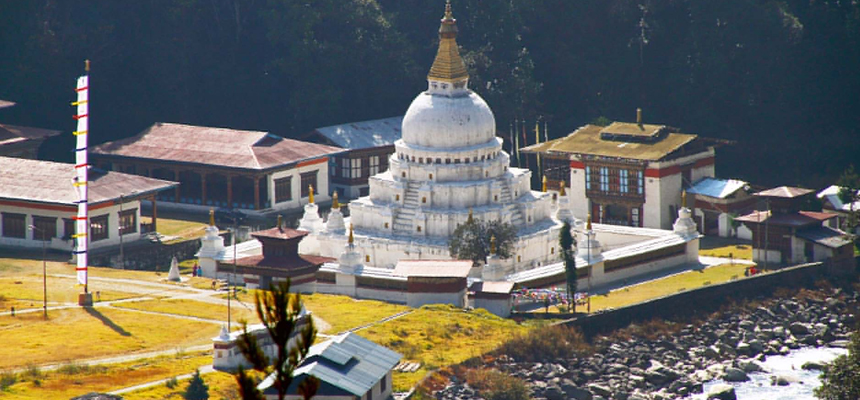Trashigang lies above the Gumri river and is the largest district in Bhutan. It is much busier than other Bhutanese towns due to its proximity to Samdrup Jongkhar in the south has enabled it to grow as a centre of commerce. Trashigang is used as the market place for the hill people from Merak & Sakteng who are known for their exceptional features and for their costume made of Sheep skin and Yak wool. The hat that they wear is unusual but has a significance of its own. It is very different from customary Bhutanese clothing. The 17th century Dzong is built on top of a cliff and serves as an administrative centre.
Sightseeing around Trashigang &Tashi Yangtse
Zangtho Pelri Kanglung Lhakhang
Khaling Lhakhang
Radhi Lhakhang
Trashigang Dzong
Trashigang Dzong sits on a jagged piece of land jutting out from the town and is the first landmark that can be seen from the road winding up to Trashigang. The Dzong was built in 1659 and commands a spectacular view over the valley for which it is the administrative center. The Dzong is significant for the fact that it only has one courtyard.
Tashi Yangtse Dzong
Tashi Yangtse formerly a sub-division of Trashigang is one of the new districts. Yangtse Dzong is half an hour walk from the road. A town has developed around Chorten Kora, one of only two chortens built in a Nepalese style and a spot where Guru Padmasambhava is believed to have had a vision that a temple and a chorten would be built. The area is also known for its exceptional woodcraft. Another temple lies on the banks of the Gumri river known as the Gom Kora dedicated to Guru Padmasambhava where he supposed tohave subdued a demon in form of a Garuda. A festival takes place every year at this temple.
Gom Kora
It is about 24 km from Trashigang although it is in Trashiyangtse district. The temple of Gom Kora is set on a small alluvial plateau overlooking the river. It is one of the famous places where Guru Rinpoche meditated in order to subdue a demon that dwelt in big rock. Behind the temple is a huge black rock surrounded by rice fields and clumps of banana trees, which looks like an oasis in an arid landscape.
Chorten Kora
It is based on stupa of Boudhanath in Nepal, and constructed in 1740 by Lama Ngwang Loday. During the second month of lunar calendar there is interesting celebration here, known as ‘Kora”.


Comments